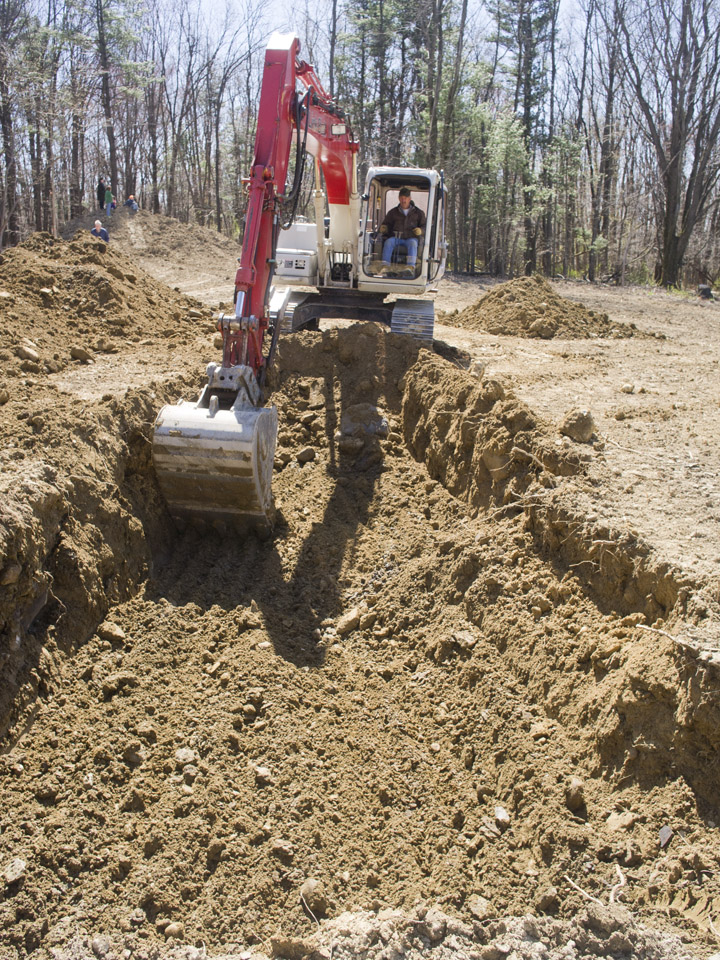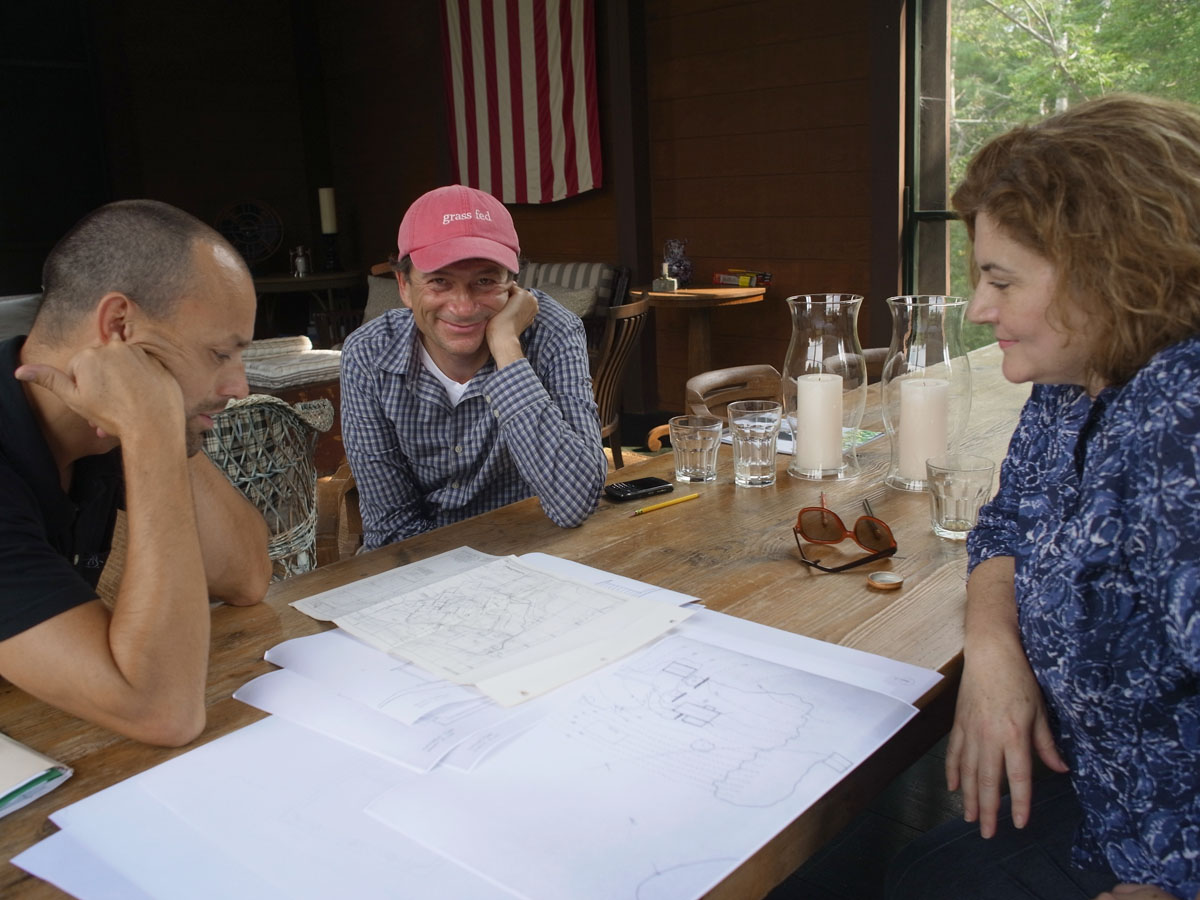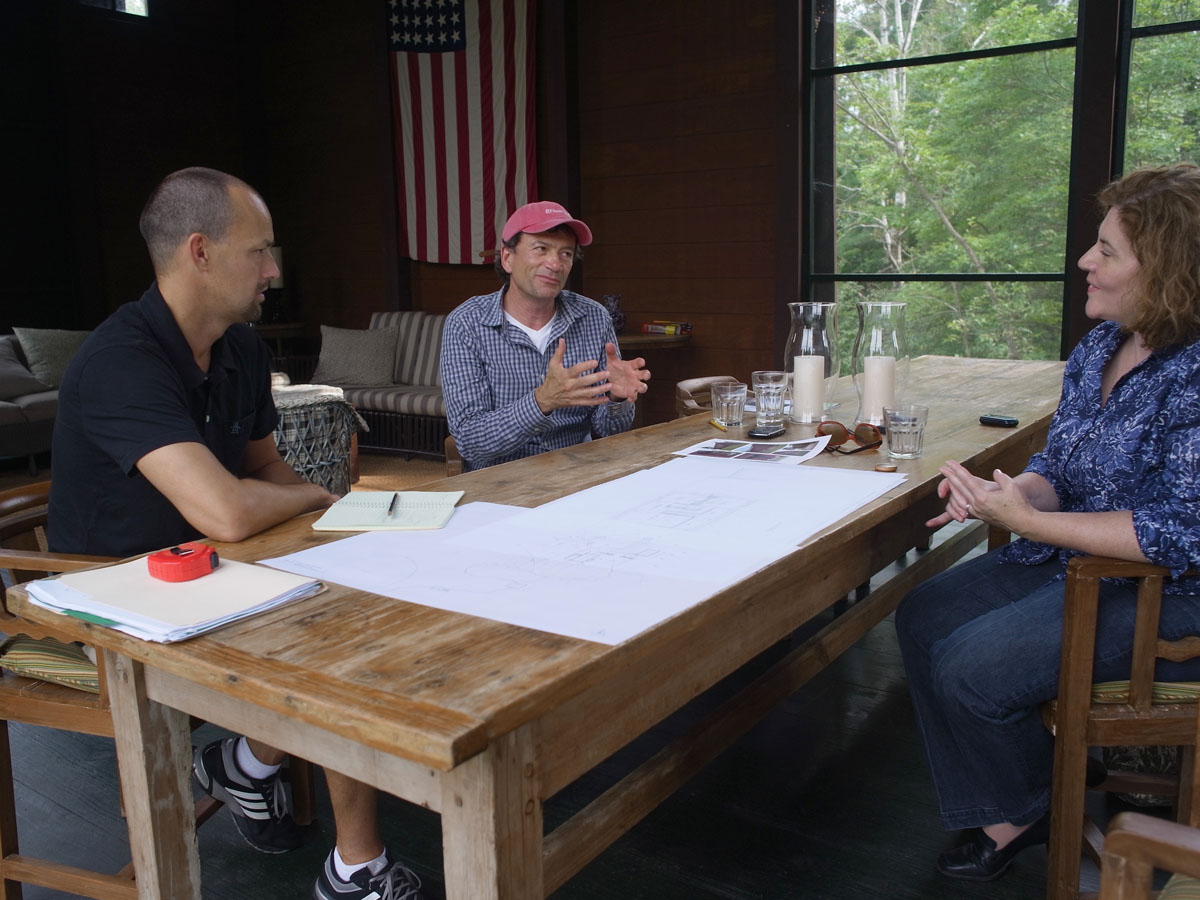Issued by the Passive House Academy in Ireland and authorized by the Passivhaus Institute in Germany, we are officially certified.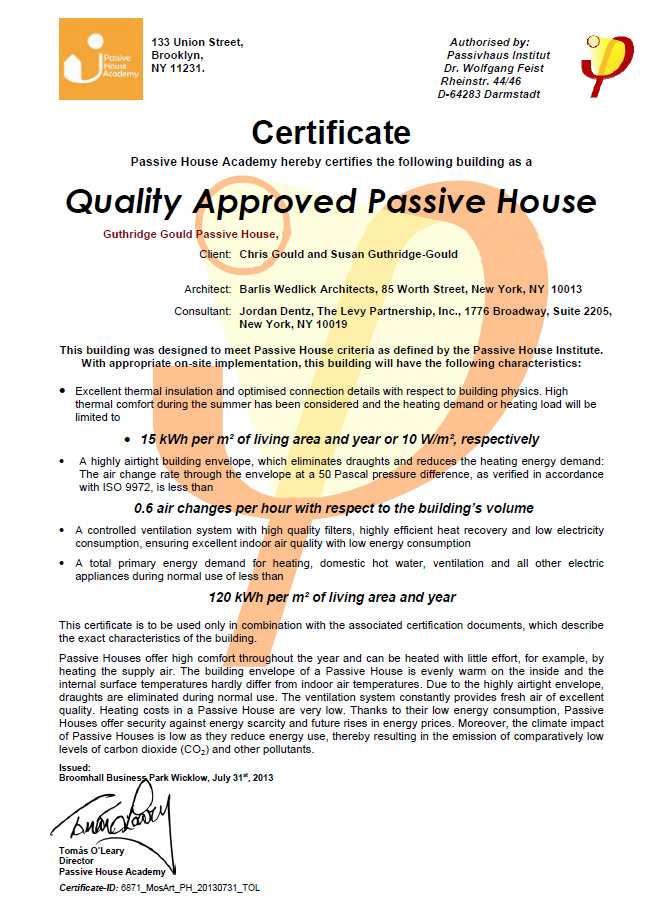
Category Archives: Certification
We passed the test at 0.3 ACH

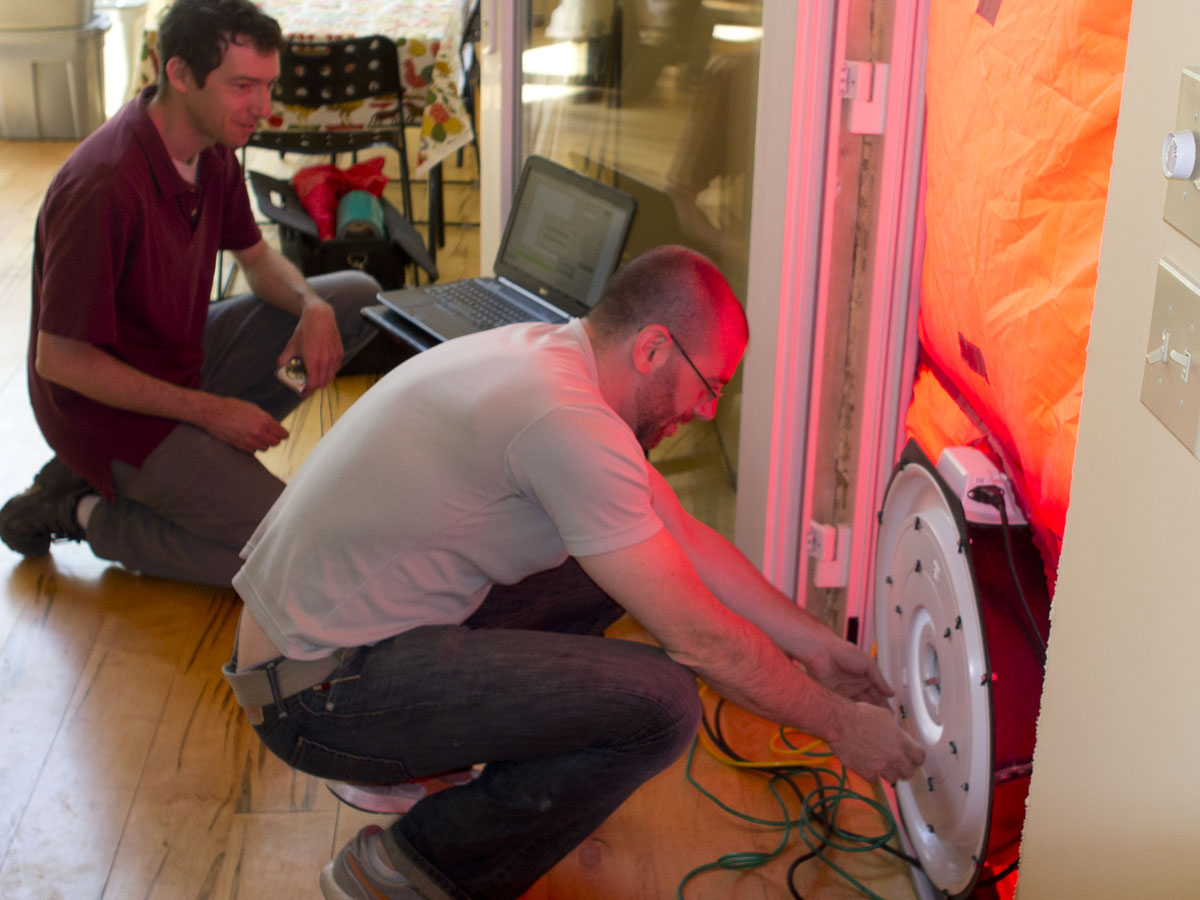

 Jordan Dentz and Dave from The Levy Partnership, along with Greg Pedrick and Nathan Russell from NYSERDA, monitor our final blower door test for Passive House certification. Read more about blower door tests here and here.
Jordan Dentz and Dave from The Levy Partnership, along with Greg Pedrick and Nathan Russell from NYSERDA, monitor our final blower door test for Passive House certification. Read more about blower door tests here and here.
Tuesday, May 7, 2013: The house was filled with brainy building science and energy experts from The Levy Partnership, NYSERDA Building R&D and CDH Energy. One team performed the blower door test, which scored 0.3 air changes per hour (ACH), exceeding the Passive House standard of 0.6 ACH. Another team set up the equipment that will monitor our energy use for the next year.
The blower door test is the key to certification. We are applying through the Passive House Academy, which is accredited by the Passivhaus Institut to provide a global Passive House Certification service.
The whole Passive House movement (that’s Passivhaus in German) is quite new here in the United States, so we volunteered to be energy Guinea Pigs and now there are little black boxes on the walls and wires sticking out of the heat pump. The data will address a number of research questions: How much energy does a Passive House use and how does that compare to homes built to current building code? How do the predictions about energy use made by the planning software compare to real life? Do the mini-split heat pumps and HRV perform like they are supposed to?
A grant from the NYSERDA High Performance Development Challenge is what brought all of this expertise to our particular Passive House, thanks to previous experience at the Barlis Wedlick project in nearby Claverak. While entire walls can be purchased ready-made in Europe that meet the Passive House standard, it’s not so common here, and it’s reassuring to have the experts confirm that our house is up to snuff, technically speaking.
Announcing our CO
Looking for gaps, engineer Jordan Dentz
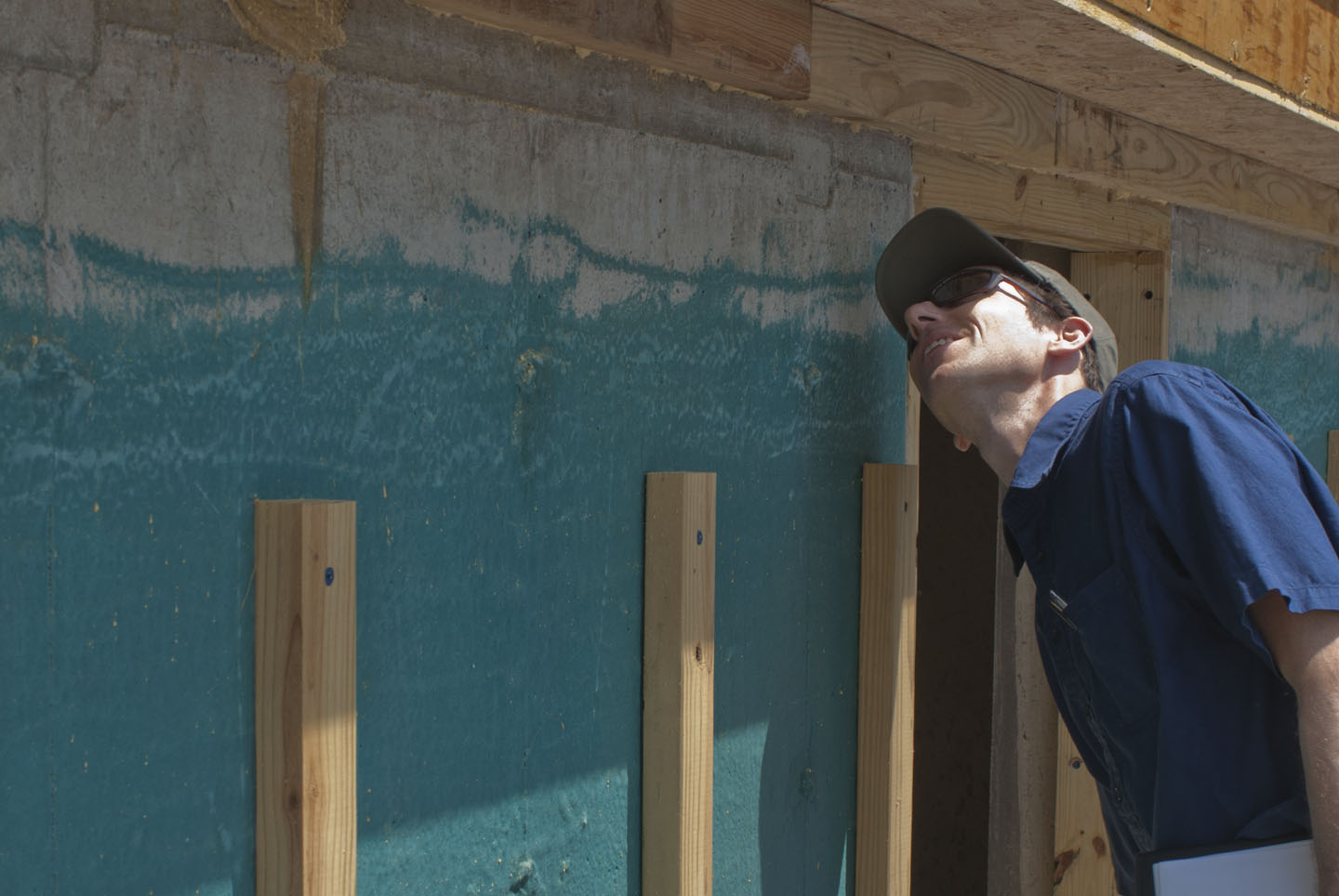 Expanding foam insulation fills a gap behind the deck soffit. Jordan, from The Levy Partnership, adds expertise in building science to our Passive House project.
Expanding foam insulation fills a gap behind the deck soffit. Jordan, from The Levy Partnership, adds expertise in building science to our Passive House project.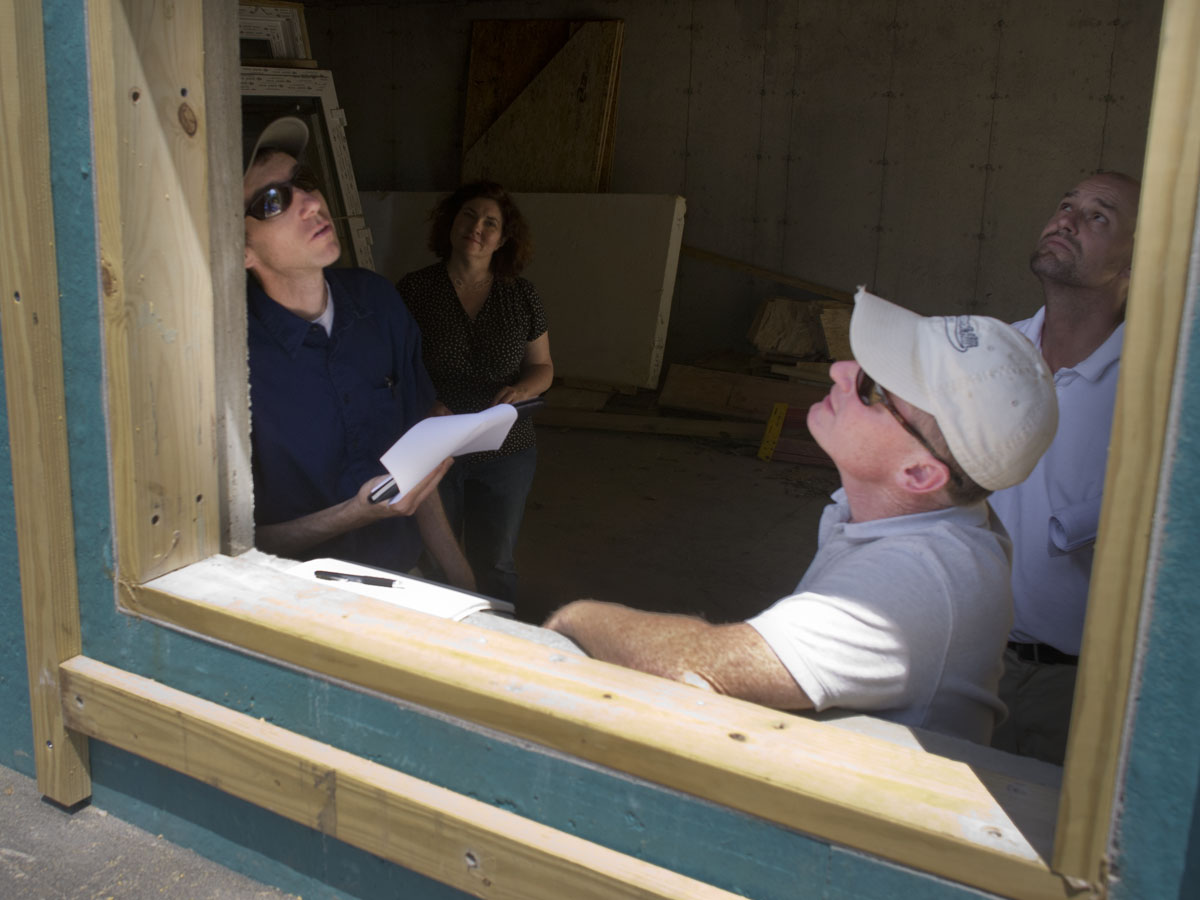 L. to R. – On his first site visit, consulting engineer Jordan Dentz meets with Susan, general contractor Bill Stratton, and architect Brian Marsh of Dennis Wedlick Architect.
L. to R. – On his first site visit, consulting engineer Jordan Dentz meets with Susan, general contractor Bill Stratton, and architect Brian Marsh of Dennis Wedlick Architect.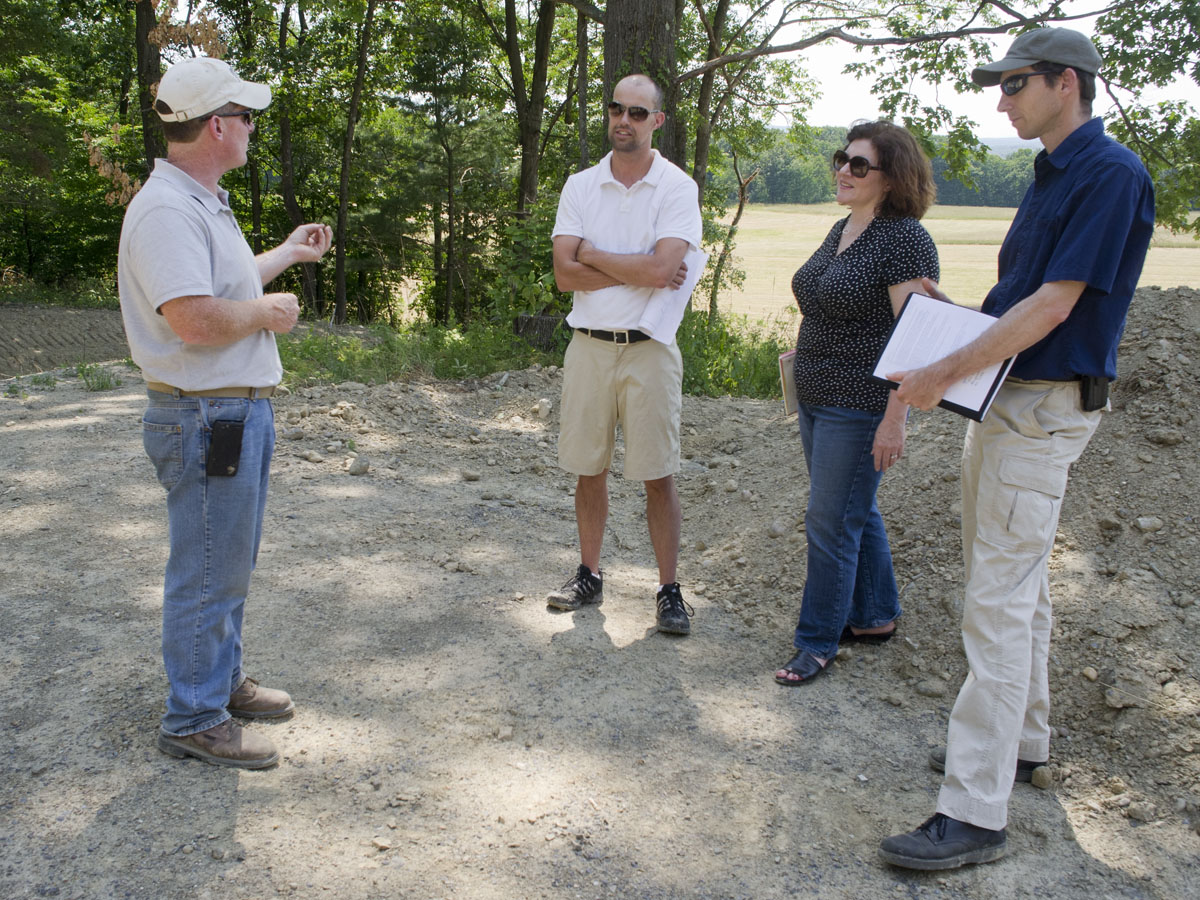 Bill Stratton updating the group on construction progress. Next week should be good weather for raising the SIPs onto the glulam structure.
Bill Stratton updating the group on construction progress. Next week should be good weather for raising the SIPs onto the glulam structure.
Considering certification
AUGUST 18, 2011: We met today with Dennis Wedlick and Brian Marsh to review highly satisfying sketches for a high-performance house. It’s a dream to work with architects after years of online shopping for plans that never seemed to fit. But there is more than the delight of good design going on here. Building a house that reduces heating demands by 90 percent takes science and engineering. Dennis and Brian built the first certified Passive House in New York State and have studied the solar gain (yes) and thermal bridging (no) issues for more than three years. My question of the day was, “Should we get certified?” It seems there is no simple “yes” or “no” answer.
Dennis described the certification process and, in particular, the benefits of working with a building science engineer. An engineer can solve problems and open up possibilities that could, for example, enable us to add another window to capture a view. In a Passive House, glass is part of a larger equation with an impact on how the heating and cooling system will function. There is an equation, literally. We are going to enter data into a computer software program about the thickness of our insulation, how the walls are attached to the foundation, windows, doors and dozens of details. The computer software is German and it will give us at least one clear answer in this process. It will tell us if our house plan meets a specific target for energy efficiency — “jah” oder “nein”.
Why am I craving a stamp of approval on my house? First, I think it may help me as a writer when I pitch articles or book ideas about the house. Second, I want to be sure that this house is really working the way it is supposed to. Additional insight came today from Dennis, who talked about storytelling.
One story strikes me as a tale of people with passion. Chris and I want to build something beautiful, smart and enduring. He wants to avoid oil bills in old age and I want to enjoy the energy irony inherent in our building site, once the proposed site of a nuclear power plant. We are building a state-of-the-art, high performance, energy-efficient house with architects who believe that this approach can and should influence the way houses are built from here on out. Dennis said he has learned more about building in the past three years than in the past two decades because to design a Passive House you need to know how it functions. He and his team at DWA are passionate about applying all they have learned while building their first Passive House to building their second, for us.
The other story is more technical. Certification in the United States is relatively recent, led by the Passive House Institute US. Do I want to delve into the who, what and why of it all? Building science is another story, with construction methods that are perhaps threatening to the building industry status quo. A great deal of conversation needs to take place among those interested in the passive house concept: different ways of doing things, experiences and new materials and technologies (more of which exist off-the-shelf in Europe than in the US). I would need to engage in the certification process in order to write about many of these issues in any depth. I would need to be an objective voice in the midst of different agendas.
Certified or not, this house starts a new chapter in our lives. Building this home is also about constructing a new life for our family here in the Hudson Valley. We are going to have a lot of stories to share.

